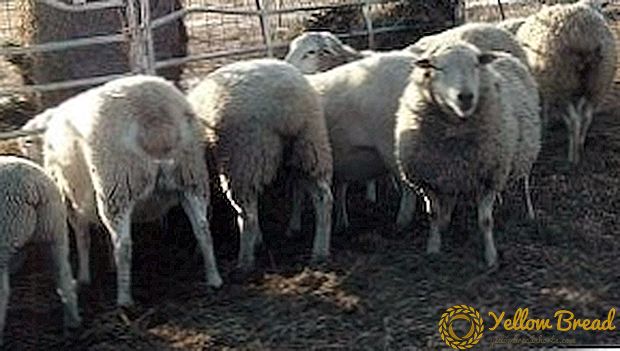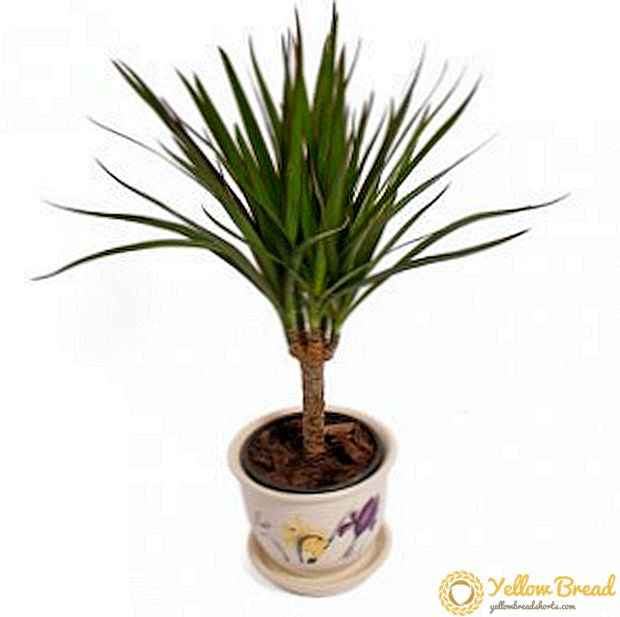 In one of the Russian schools, the students were asked what a mountain ash is and offered three answers: a bird of the family of thrushes; thickets consisting of rowan trees; shrub of the Rosaceae family. Many children asked for help on the forums. In reality fieldfare (Latin name Sorbaria, derived from sorbus - rowan) - it is not a bird or a tree, but a shrub with a height of 2-3 m, the main habitat of which is Asia, as well as Siberia and the Far East. Under natural conditions, fieldfare prefers river banks and undergrowths, wet and marshy.
In one of the Russian schools, the students were asked what a mountain ash is and offered three answers: a bird of the family of thrushes; thickets consisting of rowan trees; shrub of the Rosaceae family. Many children asked for help on the forums. In reality fieldfare (Latin name Sorbaria, derived from sorbus - rowan) - it is not a bird or a tree, but a shrub with a height of 2-3 m, the main habitat of which is Asia, as well as Siberia and the Far East. Under natural conditions, fieldfare prefers river banks and undergrowths, wet and marshy.
- Site selection and soil preparation for planting
- When and how to plant
- Grasshopper hedge and use in landscape design
- How to care for the rowan
- How to conduct watering
- Weeding and Loosening
- Fertilizer for mountain ash
- Shrub trimming
- Resistance of fieldfare to diseases and pests
The shrub tends to grow very quickly with the help of root offspring, but the varieties of this plant specially bred for decorative purposes are not so aggressive at all.
The blooming leaves of the mountain ash are similar in shape to the leaves of a tree similar in name, they are pink at first, bright green in the summer, and golden or dark orange in the autumn. The flowering of the mountain ash begins in June, when the bush is covered with light (white or beige) inflorescences in the shape of elongated pyramids, for which it received the name "spiraea ash-leaved."
Site selection and soil preparation for planting
 Mountain ashberry does not belong to too naughty plants. It can feel good in the shade, and in bright places. The best place for planting a fieldfare is a sunny area shaded during the hottest time of day. The shrub can be grown on any soil, however, this ornamental plant will be especially bright and beautiful if it is provided with a well-moistened and rich in organic fertilizer soil, protected from stagnant water. The ideal option is a fertile loamy neutral soil (pH level from 6.5 to 7). You can also mix in the same proportions of humus, sand and turf. In the dry and depleted areas, the dog grows poorly.
Mountain ashberry does not belong to too naughty plants. It can feel good in the shade, and in bright places. The best place for planting a fieldfare is a sunny area shaded during the hottest time of day. The shrub can be grown on any soil, however, this ornamental plant will be especially bright and beautiful if it is provided with a well-moistened and rich in organic fertilizer soil, protected from stagnant water. The ideal option is a fertile loamy neutral soil (pH level from 6.5 to 7). You can also mix in the same proportions of humus, sand and turf. In the dry and depleted areas, the dog grows poorly.
When and how to plant
The correct time for planting a fieldfare is early spring. It is not necessary to be afraid of freezing of the plant, this shrub is quite resistant to low temperatures and easily takes root, even if the sun did not have enough time to warm the earth. Spikes for planting do not need special additional preparation. Simply place them in pits about 35 cm deep, sprinkle with a fertile layer of soil, ram and water well. The distance between the specimens must be chosen taking into account the fact that the shrub will grow strongly.
Fieldfare can be planted on uneven areas that have a strong slope, but in this case it is necessary to correctly form the near-trunk circles, providing a deeper funnel from the side of the slope so that the water can linger inside the circle and the root system of the grassfields is provided with sufficient moisture.
Grasshopper hedge and use in landscape design
 Good winter hardiness and endurance make it easy for the mountainfant to take root in the conditions of the city, to always be in the tone of its decorative effect, which makes it possible to use it in design schemes of both private and municipal gardening.For decorative purposes, the field soldier can be used in single plantings and in a group, hedges are formed from it, in addition, it can be used to hold the soil on slopes, which is greatly facilitated by the numerous root shoots formed by this shrub. On the coastline of natural and artificial reservoirs flowering thickets of mountain ash look amazingly beautiful.
Good winter hardiness and endurance make it easy for the mountainfant to take root in the conditions of the city, to always be in the tone of its decorative effect, which makes it possible to use it in design schemes of both private and municipal gardening.For decorative purposes, the field soldier can be used in single plantings and in a group, hedges are formed from it, in addition, it can be used to hold the soil on slopes, which is greatly facilitated by the numerous root shoots formed by this shrub. On the coastline of natural and artificial reservoirs flowering thickets of mountain ash look amazingly beautiful.
With anything you can plant a fieldfare, but to make the result look like the work of a professional landscape designer, you only need to show a little imagination and diligence. It can be made the main element of the garden composition, if you put around the lawn of ground cover ornamental plants. It can, on the contrary, be used in a group, playing with various flowers and plant forms and combining them in original and stylish combinations. This shrub can decorate the foot of the trees or shade other flowering shrubs, such as lilac purple shades.
The rowanberry in the form of dense thickets looks very romantic, thanks to the similarity of its leaves with a fern, and when the plant blooms, the picture becomes completely amazing.For such an ability to combine the naturalness and decorativeness of a fieldfare, it is very popular among flower growers and connoisseurs of natural landscapes. Especially valuable is the fact that the soldier starts blooming quite early, when other garden plants are just gaining a green mass and the brightness of the colors in the garden is still not enough. At the same time after flowering shrub still looks very attractive.
 In addition to landscape gardening applications, the grass soldier can be very successfully used for other applications. This plant is an excellent budget option for landscaping roadside gas stations, cafes and small motels. A successful solution can also be considered as planting by the rowfights of spatially limited land plots that need to be filled with greenery — for example, dividing lanes on highways, islands in the pavement blind pavement, etc.The impossibility of growth is provided in this case by natural borders, and such thickets will look very elegant.
In addition to landscape gardening applications, the grass soldier can be very successfully used for other applications. This plant is an excellent budget option for landscaping roadside gas stations, cafes and small motels. A successful solution can also be considered as planting by the rowfights of spatially limited land plots that need to be filled with greenery — for example, dividing lanes on highways, islands in the pavement blind pavement, etc.The impossibility of growth is provided in this case by natural borders, and such thickets will look very elegant.
How to care for the rowan
 Mountain ash - The bush is very hardy, not whimsical and does not require special care. It is enough to water the plant regularly, provide it with organic dressing (humus, peat, compost, etc.) will be suitable for this, and also remove the inflorescences after the ryninnik fade (the latter is done not so much with the purpose of caring for the plant, but for aesthetic purposes - at a mountain ash, like a lilac, faded clusters look very unattractive and untidy).
Mountain ash - The bush is very hardy, not whimsical and does not require special care. It is enough to water the plant regularly, provide it with organic dressing (humus, peat, compost, etc.) will be suitable for this, and also remove the inflorescences after the ryninnik fade (the latter is done not so much with the purpose of caring for the plant, but for aesthetic purposes - at a mountain ash, like a lilac, faded clusters look very unattractive and untidy).
How to conduct watering
The fieldfare with all its unpretentiousness does not tolerate drying out. Immediately after planting and in the following days, the plant should be watered especially abundantly. After the bush has finally started, it can be a fairly intensive watering (at least two buckets per bush) twice a month. Of course, if the weather is too hot, watering can be done more often.
The field is very grateful not only for root irrigation, but also for abundant leaf spraying, but this can only be done before or after sunset, so that wet leaves are not burned by bright rays.
Weeding and Loosening
 The treatment of the soil to the footfights requires minimal. Even the bushes need to be cleaned of weeds only in the first period after planting: expanding, the root system of fieldfare independently displaces all weeds. The stem should be loosened so that the soil is enriched with oxygen and does not dry out, but you can save yourself from these regular procedures by mulching the soil with compost, peat and leaf humus; it is enough to do this twice or three times during the season.
The treatment of the soil to the footfights requires minimal. Even the bushes need to be cleaned of weeds only in the first period after planting: expanding, the root system of fieldfare independently displaces all weeds. The stem should be loosened so that the soil is enriched with oxygen and does not dry out, but you can save yourself from these regular procedures by mulching the soil with compost, peat and leaf humus; it is enough to do this twice or three times during the season.
Fertilizer for mountain ash
The root system of fieldfare requires loose soil.Therefore, the shrub needs to be regularly fed with organic matter, and fertilizers in small portions are applied directly to the surface of the tree trunk circle or are shallowly buried simultaneously with loosening the soil. It’s not necessary to dig up the soil; the fertilizer mixes with the soil over time without any help.
From the mineral fertilizers, the grassfields need phosphorus, potassium and nitrogen. These elements can be introduced in the form of granules by simply sprinkling them on the stem of a stem once or twice a year at the rate of a maximum of 20 g of the universal mixture per 1 square meter of area.
Shrub trimming
Fieldfare well-shaping and gratefully tolerates a haircut. So, it is possible to leave low-growing thickets of fieldfare, spending annually a cardinal spring pruning. Since the flowering of shrubs occurs on young shoots discarded in the current year, pruning does not damage the formation of peduncles.
Grooming fieldfare allows you to keep the shrub in a more neat and compact form. Stylish and original look live living Border of a fieldfare, cut at half a meter and even lower.Such a haircut should be carried out more often - at least three times during the season: in the spring after the first release of young shoots, in summer and in early October.
Resistance of fieldfare to diseases and pests
 Mountain ash is highly resistant and rarely suffers from pests and diseases. For young branches, a green aphid is dangerous, sucking the juice from the early leaves, in which case they curl and dry. Sometimes the field soldier infects spider mites, traces of his life in the first place can be seen on the back of the leaves.
Mountain ash is highly resistant and rarely suffers from pests and diseases. For young branches, a green aphid is dangerous, sucking the juice from the early leaves, in which case they curl and dry. Sometimes the field soldier infects spider mites, traces of his life in the first place can be seen on the back of the leaves.
The plant affected by these pests is treated with "Fitoverm" or "Mitakom" (30 ml of substance per bucket of water). The procedure after some time should be repeated. Proven folk remedies for aphids are infusion of garlic, dandelion or onions.
Viral mosaic that can strike a weakened shrub can not be treated. When the leaves appear on the yellowish spots, indicating the disease, the shrub should be immediately excavated and burned.
On the whole, it can be said with confidence that the grasshopper is an unpretentious plant, planting and caring for it does not require much effort.






